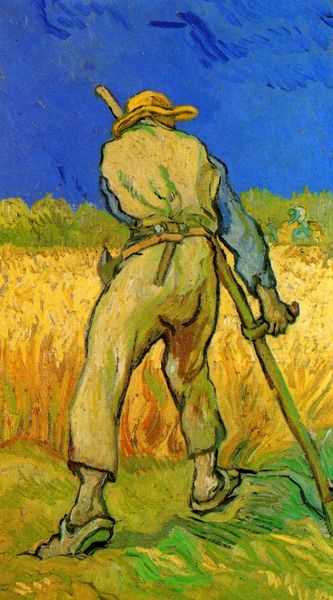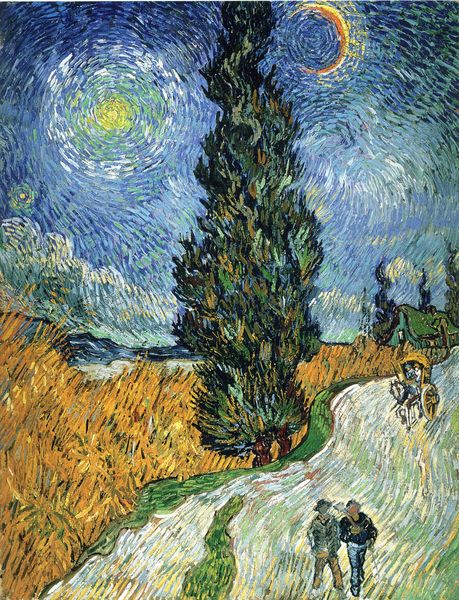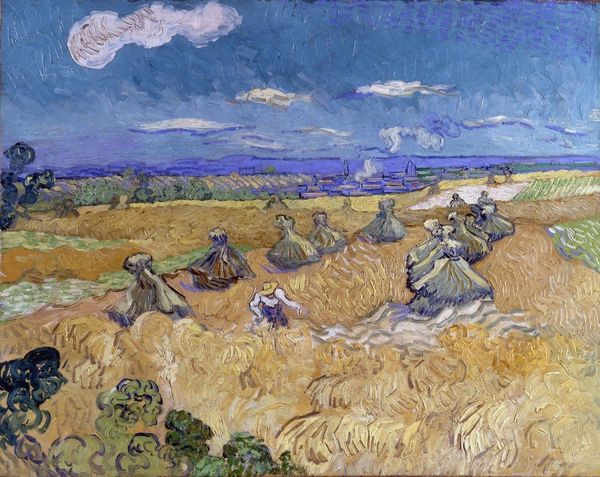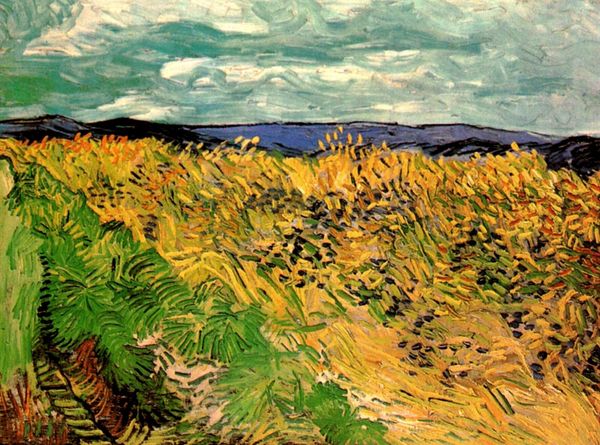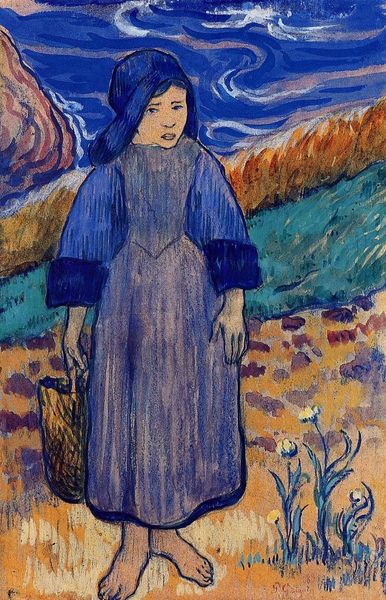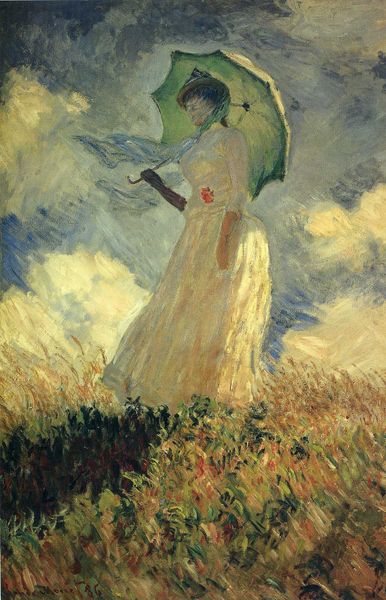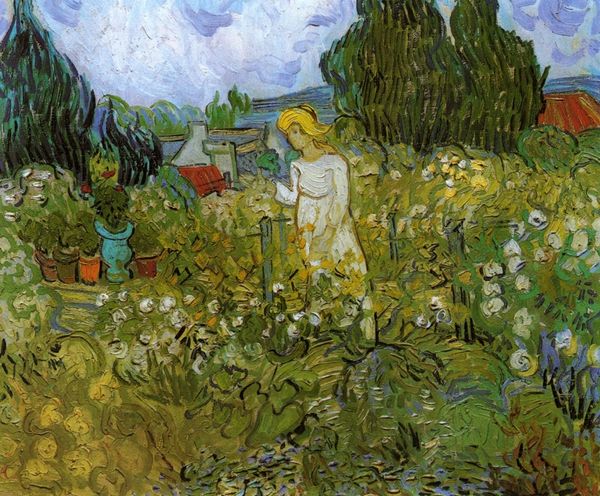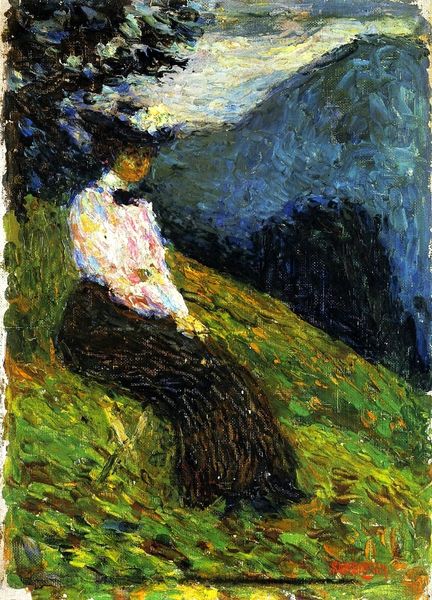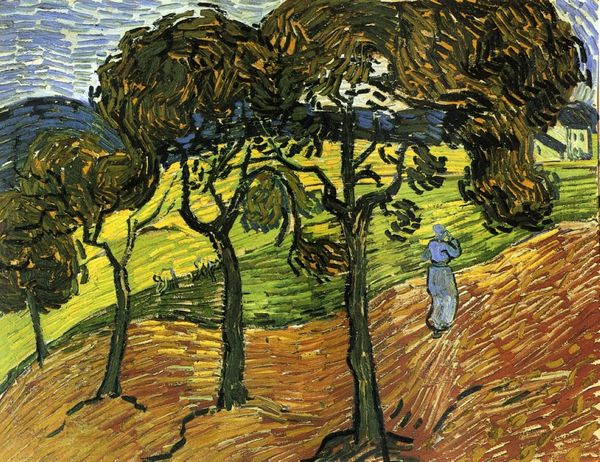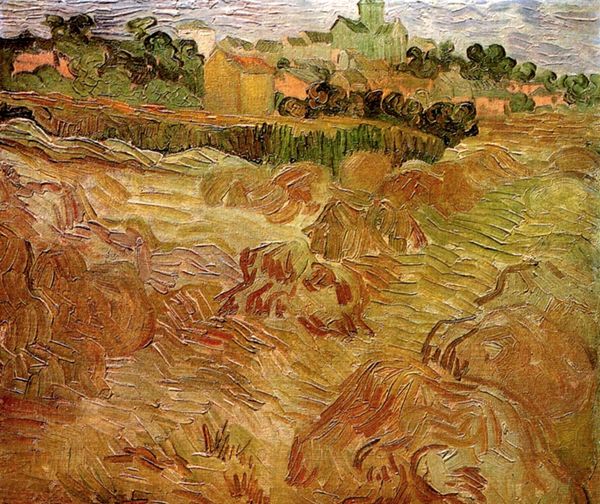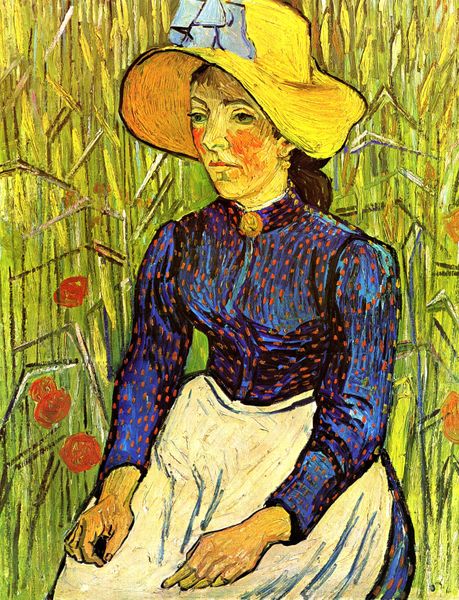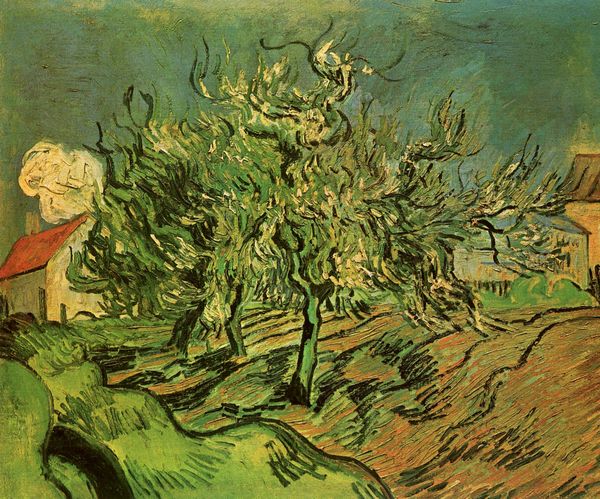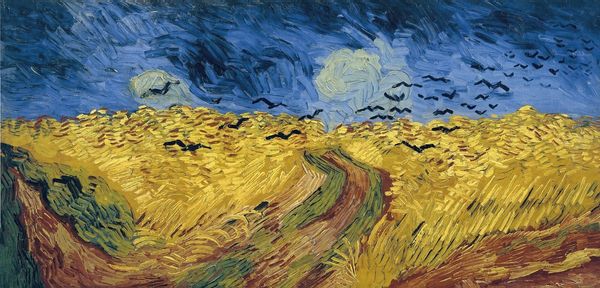
Dimensions: 52.7 x 40.7 cm
Copyright: Public domain
Vincent van Gogh created The Shepherdess in the late 19th century using oil on canvas. The material itself—thick, expressive strokes of paint—becomes the subject. The canvas is almost completely covered with paint, applied in layers. Look at the way the brushwork captures the texture of the field, the sheep's wool, and the shepherdess's roughspun clothing. Van Gogh used these expressive marks to represent the labor and life of rural workers. This image is after Jean-François Millet, an artist known for his sympathetic depictions of peasant life, yet Van Gogh’s handling of the paint, is all his own. The heavy impasto and vivid colors bring a new emotional intensity to Millet’s original composition. By focusing on the tactile qualities of paint and its application, Van Gogh elevated the everyday to the extraordinary. His work asks us to look closely at the world around us and recognize the beauty and dignity in ordinary labor, challenging distinctions between fine art and craft.
Comments
No comments
Be the first to comment and join the conversation on the ultimate creative platform.
